Colombian Drinks: Basic Overview
Common Ingredients
Common Preparing Methods
Key Taste
Drinking Etiquette
Culinary Festivals
Influence and Fusion
Types of Colombian Drinks
-
Alcoholic Beverages
In Colombia, spirits distilled from sugarcane and beers brewed for tropical climates are a crucial part of celebrations and social gatherings.
-
Non-alcoholic Beverages
Colombia’s diverse ecosystem provides various ingredients for preparing alcohol-free beverages.
Coffee and fruit juices are among the most popular non-alcoholic beverages in Colombia.
Colombian beverages are drinks that are popularly enjoyed in Colombia, a country in South America. These drinks are characterized by a mix of indigenous and European (namely Spanish) influences.
Fresh fruits and sugarcane are essential in the Colombian tradition of making drinks, highlighting the country’s bounty of tropical ingredients. Many local beverages have international or regional appeal, especially coffee, when it goes well with many specialties of Colombia.
Keep on reading, and I will give you informative facts about traditional Colombian drinking culture. Next, I will describe the most famous 20 beverages in Colombia before covering the basic features of local drinks.
20 Classic Colombian Beverages
20 incredible beverages from Colombia are waiting for you! Use the handy filter system to give you an overview look at these drinks in alphabetical order, tastes, ingredients, drink types, preparation method, and global popularity.
Next, uncover more things about Columbian beverages with its most popular, national, traditional, street-side, and fusion dink options:
Coffee
- Non-Alcoholic
- National
- Traditional
Coffee is the most popular beverage in Colombia. The history of coffee in Colombia dates back to the early 19th century.
Nowadays, Colombian coffee is now renowned worldwide for its quality and distinct flavor profile. This product makes up 10% of the country’s total exports.
Arabica coffee, the most popular variety in Colombia, has a smooth, mild flavor, well-balanced acidity, and a strong scent of chocolate and caramel. This taste goes well with many sweet pastries, snacks, and breakfast items, such as buñuelo and pan de bono.
Colombians call black coffee “tinto,” which literally means “red wine,” due to the light red shade of local coffee. Tinto is among the most common types of coffee in the country.
Aguardiente
- Alcoholic
- National
- Traditional
Aguardiente, literally “burning water,” is an iconic distilled liquor in Colombia. Originally created in the Iberian Peninsula, it has many variations throughout Latin America.
Colombian aguardiente is chiefly made from sugarcane, with anise for flavoring, and has only around 29% ABV. By contrast, Spanish or Portuguese aguardiente is typically distilled from grapes or wine and can have varying levels of alcohol content.
Colombian aguardiente offers an herbal and licorice-like flavor yet leaves a burning sensation. People often serve it in small shot glasses or incorporate it into cocktails.
Chapil is a variation of aguardiente that is native to the Awá people in the Nariño region of Colombia. Indigenous people think that chapil can protect them from evil spirits and supernatural events.
Sabajón Colombiano is a Colombian-style eggnog that replaces rum and brandy with aguardiente for a local twist.
Beer
- Alcoholic
- Traditional
Beer, known locally as pola, is a ubiquitous alcoholic beverage in Colombia, especially lager-style beer with a crisp and refreshing taste suitable for tropical climates. Most beer brands have an alcohol content of 4.7%.
Colombia has a wide variety of beer brands to pick from, like Costeña, Águila, Pilsen, and Club Colombia, with the last one being a high-end brand. These beverages pair well with grilled food and dishes with robust flavors, including pescado frito and sancocho.
Rum
- Alcoholic
- Traditional
Rum is a classic beverage in Colombia, demonstrating the Caribbean influence on the country’s northern coast. Its main ingredient is sugarcane molasses or juice, which is fermented, distilled, and aged in barrels.
As the aging process is carried out in tropical climates, it gives Colombian rum a rich, caramel-like flavor with hints of vanilla and spices. This liquor is an ideal match for savory meat-based dishes like lechona or sobrebarriga.
Colombians often have rum as it is or on the rock since this beverage can get up to 40% ABV. Dictador and Ron Viejo de Caldas are well-known rums in Colombia.
Fruit Juice
- Non-Alcoholic
- Traditional
Fruit juice, known locally as jugo, is a beloved category of non-alcoholic beverage in Colombia. It features various fresh tropical fruits, such as passion fruits, dragon fruits, mangosteens, and sapodilla.
Depending on the fruit and preparation method, Colombian fruit juices range from sweet to tangy and liquid to creamy. These beverages come in many vibrant colors and can incorporate milk or sugar for extra richness.
Colombians love to enjoy chilled or iced fruit juices on their own or alongside light dishes like arepa and tamales.
If you want to try an unforgettable Colombian fruit juice, go for lulada, a sweet and tart mix of native lulo fruit, lime juice, ice, and sometimes, even aguardiente.
Soda
- Non-Alcoholic
- Traditional
Soda is a sought-after type of carbonated beverage in Colombia. However, global household names like Pepsi and Coca-Cola aren’t the most popular options; instead, locals have their eye on champagne cola (also known as champagne soda).
Champagne cola is a well-known Latin American beverage with a champagne-like gold color and a very sweet flavor similar to cream soda.
Postobon, a Colombian beverage company, is the biggest producer of champagne cola and other types of soda in Colombia.
Postobon sodas come in many tropical flavors, including grapes, apples, lemons, oranges, pineapples, and strawberries. These products can complement casual dishes with light flavors, such as bandeja paisa and arroz con pollo.
Limonada de Coco
- Non-Alcoholic
- Traditional
Limonada de coco, also known as Colombian limeade, is a well-known Colombian beverage mixing limeade with creamy coconut milk. It originated on the country’s Atlantic coast.
People prepare Colombian limeade by blending lime juice, ice, and coconut cream in a blender until the mixture achieves a frothy, slushy consistency. This sweet and tart beverage is typically served in a tall glass with extra ice on top.
Since limonada de coco is a specialty of coastal cuisine, seafood specialties like cazuela de mariscos and sudado de pescado al coco make great accompaniments.
Aguapanela
- Non-Alcoholic
- Traditional
Aguapanela, also known as agua de panela, is a popular Colombian beverage made with panela (unrefined whole cane sugar). Outside Colombia, it is also well-known in many Central and South American countries under the name of papelón con limón.
The preparation of aguapanela starts with soaking the sugar cane block in water to soften it, then combining the sugar with water and lemon juice. Locals usually enjoy this simple drink with ice and typical Colombian comfort food, like caldo de costilla and ajiaco.
Besides being a refreshing and energy-rich beverage, aguapanela is sometimes used as a sweetener for coffee or hot chocolate.
Chocolate con Queso
- Non-Alcoholic
- Traditional
Chocolate con queso is a traditional Colombian beverage that mixes hot chocolate with mild, fresh cheese. This combination results in a wonderful blend of sweet, bitter, and salty delights.
This chocolate and cheese beverage is traditionally enjoyed as a breakfast treat or an afternoon snack, with a side of arepas or bread for dipping. Dairy-based desserts, like natilla and pastel de gloria, also make excellent pairings with this rich beverage.
Refajo
- Alcoholic
- Traditional
Refajo is a well-known Colombian cocktail that mixes equal parts of Colombiana soda (a famous champagne cola brand) with lager or pilsner beer. People often pour the ingredients into a big pitcher without mixing them and garnish the pitcher with a wedge of orange or lime.
Some people describe the taste of refajo as similar to a sweetened version of champagne. As this cocktail is very popular at parties, its typical accompaniments are festive dishes, like lechona and bandeja paisa.
Cholados
- Non-Alcoholic
- Street Beverages
Cholado is an iced Colombian non-alcoholic drink from the Japúndi area in southwestern Colombia. Blurring the line between drinks and frozen desserts, it features a bed of shaved ice or chipped ice drizzled with sweet fruit syrup, condensed milk, and fresh fruits.
From mangoes and papayas to pineapples and strawberries, many types of fruits are ideal ingredients for this sweet and fruity beverage. Available at many street stalls, cholados is a very convenient and refreshing street beverage in Colombia.
Fruit Smoothie
- Non-Alcoholic
- Street Beverages
- Traditional
Fruit smoothie, known locally as batidos, is a beloved non-alcoholic beverage in Colombia. It features seasonal tropical fruits, milk or powdered milk, and a lot of water, all blended into a thick and creamy mixture.
Batidos are popular with Colombians of all ages, who enjoy having sweet fruit smoothies as a light dish or breakfast. Therefore, breakfast dishes, namely calentado and arepa, are natural accompaniments for batidos.
Salpicón
- Non-Alcoholic
- Traditional
Salpicón is a well-known sweet fruit-based beverage in Colombia. It is prepared by combining diced tropical fruits, such as watermelons, pineapples, mangoes, and grapes, in a liquid base of fruit juice and soda.
Salpicón is a colorful, juicy treat for hot summer days, offering a chunky texture and a sweet, tangy taste.
Some people even describe salpicón as a fruit salad in a drink. Feel free to sip or eat it with a spoon alongside light dishes like pescado frito and tamales.
Chicha
- Alcoholic
- Traditional
Chicha is an interesting Colombia beer-like beverage originating from the Andes and Amazonian areas. While it has many variations throughout the Americas, the Colombian version is created through the fermentation of corn, honey (or sugar), and a special yeast.
Chicha is a sweet and light alcoholic beverage with an ABV of no more than 3%. Although this indigenous beverage has been outlawed in Colombia since 1949, people still secretly enjoy it in many places.
Canelazo
- Alcoholic
- Traditional
Canelazo is a Colombian spiced alcoholic drink native to the Andean region, especially in the cooler highland areas. It is prepared by simmering water with cinnamon, panela, and cloves before adding aguardiente to the mix.
Canelazo is famous for its warm, soothing properties. The sweetness of panela balances the strong flavors of the spices and the sharpness of aguardiente.
Colombians have a habit of enjoying canelazo during the cold weather months with comfort food dishes like changua and caldo de costilla.
Avena Colombiana
- Non-Alcoholic
- Traditional
Avena Colombiana, literally “Columbian oatmeal,” is a traditional Colombian beverage made with this ingredient. With a sweet and creamy flavor, it is usually chilled to serve as a summer drink or in the morning as a nutritious breakfast drink for children.
The making of avena Colombiana involves soaking oats in water, blending them with milk (optional) and sugar, and cooking the mixture with spices. Many people like to refrigerate the mixture and blend it to make the beverage even creamier.
In terms of accompaniments, calentado and pan de bono are ideal dishes to enjoy with avena Colombiana.
Guarapo
- Non-Alcoholic
- Traditional
Guarapo is a classic Colombian drink made from fermented sugarcane juice and lime juice. While guarapo literally means “sugarcane juice” in Spanish, it always refers to the fermented beverage in Colombia and the rest of Latin America.
Guarapo sports a delightful contrast between the sweetness of sugarcane juice and the citrusy tang of limes. Consume this sugarcane juice beverage with savory seafood dishes like cazuela de mariscos and pescado frito for a balanced flavor profile.
In Colombia, numerous street vendors offer this beverage. They always prepare the drink right before the customers as proof of its quality and freshness.
Champús
- Non-Alcoholic
- Traditional
Champús is a beloved Colombian beverage with indigenous origins. It is particularly popular in the Andean region of the country.
In essence, champús is a mix of corn, pineapple juice, mashed-up lulo fruits, cinnamon, cloves, and panela.
Originally a Christmas beverage, champús is now a common sight throughout the year in Colombia. Its blend of thick, grainy texture with the sweet and tart flavor makes it a refreshing beverage for all seasons.
Although people in Peru and Ecuador also have their versions of champús, only the Colombian version features lulo fruits. Versatile dishes, such as lechona and tamales, go well with this beverage.
Colombia Cocktail
- Alcoholic
- Fusion
Colombia is a simple yet beautiful cocktail made with vodka, grenadine, blue curaçao, lemon juice, and a large amount of orange juice.
These ingredients are prepared so that they create stacked layers of yellow, blue, and red, which are the colors of the Colombian flag.
This visually striking Colombian cocktail is a crowd-pleasing beverage at parties and festive occasions. Special dishes for celebratory meals, including buñuelos, sancocho, and lechona, will pair well with it.
Mazamorra
- Non-Alcoholic
- Traditional
Mazamorra is a typical corn-based beverage in Colombia. While “mazamorra” was historically a stew, it is now a creamy beverage made by cooking kernels with panela and spices in milk into a soupy consistency.
Depending on the type of corn, mazamorra is either white or yellow. Both versions boast a topping of caramel, condensed milk, or extra corn kernels on top.
Sweet and creamy mazamorra is a perfect match for desserts and sweets, like dulce de leche and natilla.
You now have a very good grasp of individual Colombian beverages, so let’s deepen your understanding by looking at the big picture of drinks in Colombia.
What Is Special About Beverages in Colombia?
The three following factors play a vital role in shaping Colombian beverages and are useful in understanding local drinks.
Cultural Influences
Colombian beverages result from a mix of indigenous cultures, European colonization, African influence, and more recent global interactions.
Geography and Climate
With the Andes Mountains, vast rainforests, and two coastlines, Colombia has a diverse geography and various types of climate. These conditions are ideal for growing many different ingredients used in traditional and modern beverages.
For instance, this country has an excellent coffee-growing region that benefits from high altitudes, volcanic soils, consistent rain, and a stable temperature.
Meanwhile, tropical fruits harvested throughout Colombia are core ingredients in many beverages.
Social and Festive Occasions
Colombian social gatherings and festivals can’t be complete without the correct beverages to liven the atmosphere. For instance, aguardiente is a must-have on many special occasions.
Do you find my Colombian drink suggestions informative? Let me know your thoughts and opinions in the comment section. Before you leave, don’t forget to share this compilation of Colombian beverages with your friends.


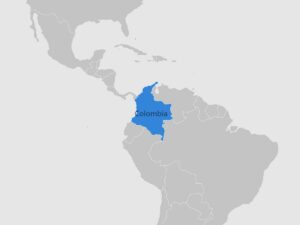
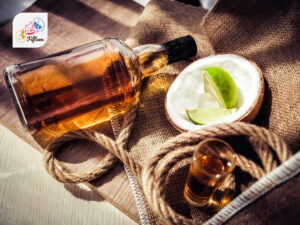
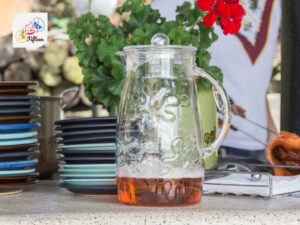
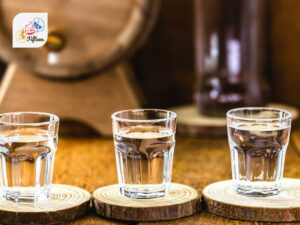
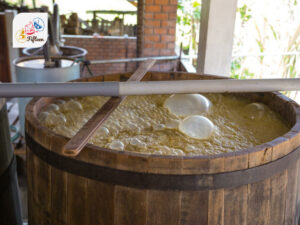
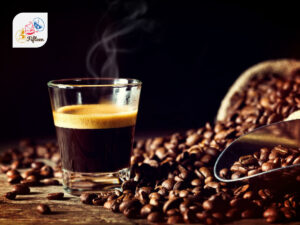
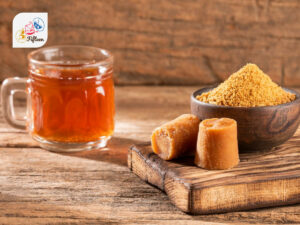
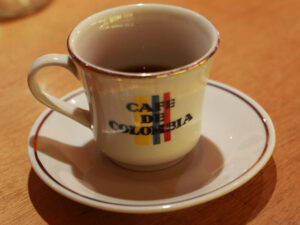
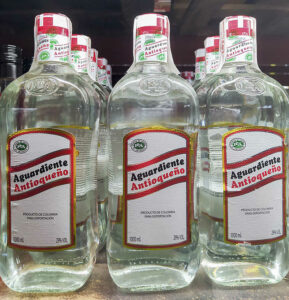
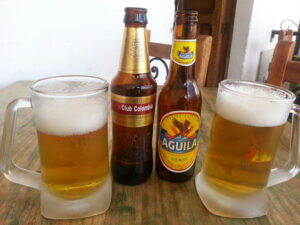
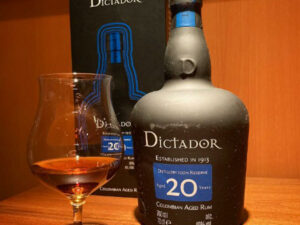
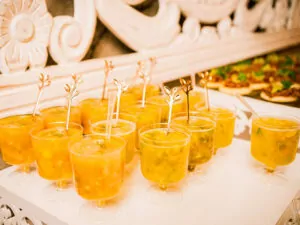
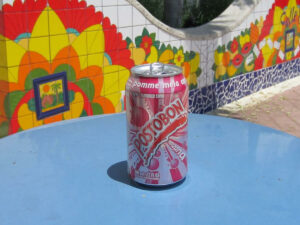
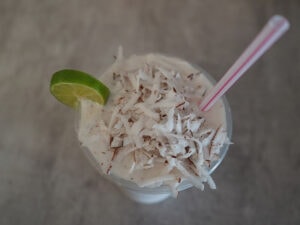
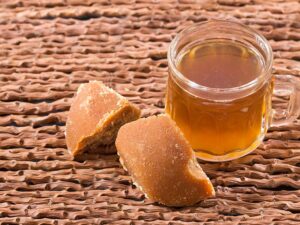
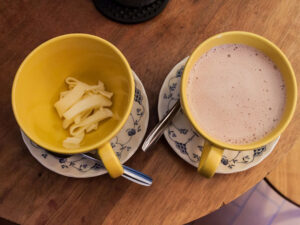
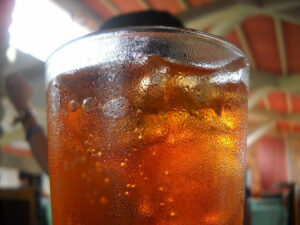
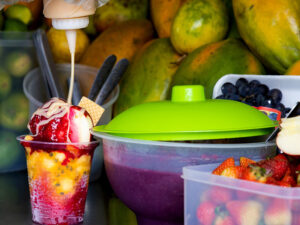
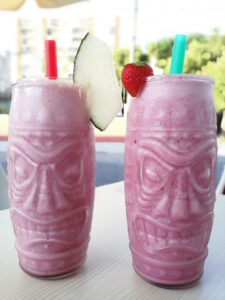
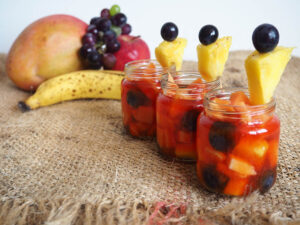
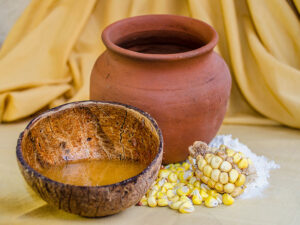
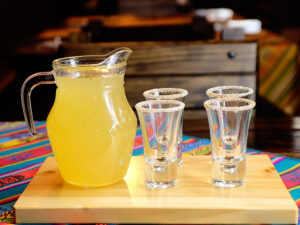
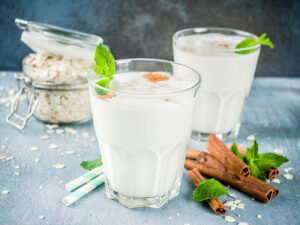
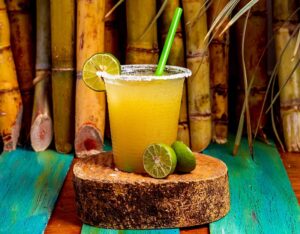
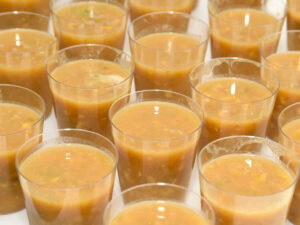
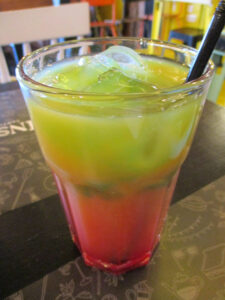
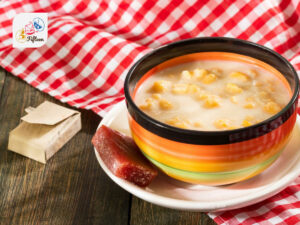
Jamie Scott
Editor in Chief, Senior Content Writer
Expertise
Home Cooking, Meal Planning, Recipe Development, Baking and Pastry, Food Editor, Cooking-video Maker, Western Food Evaluation Expert
Education
Le Cordon Bleu College of Culinary Arts
Local Community College, New York, NY
Jamie Scott is a skilled culinary expert and content creator specializing in Western cuisine. With over 15 years in the culinary field and formal training from Le Cordon Bleu, Paris, Jamie deeply understands how to blend nutrition with delicious flavors. His passion for cooking matches his commitment to making healthy eating accessible and enjoyable.
On Fifteen.net, Jamie brings a fresh perspective to classic dishes and beverages, offering readers insightful recipes, cooking tips, and a fresh view on meal planning that emphasizes taste, health, and simplicity.